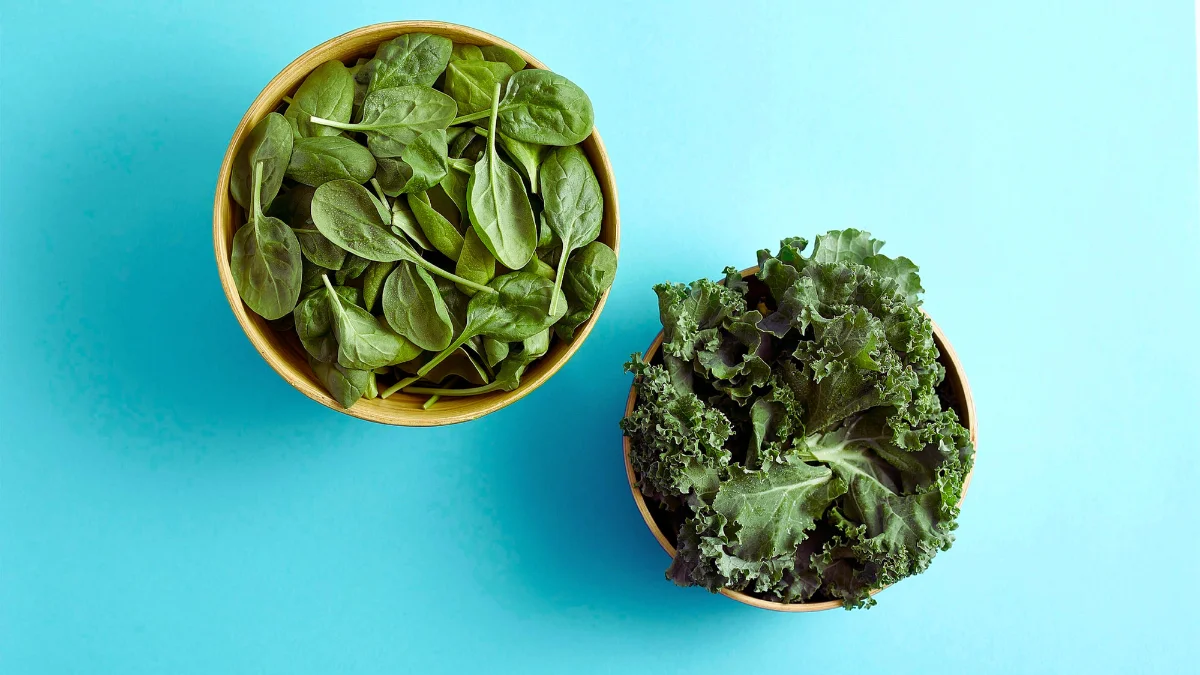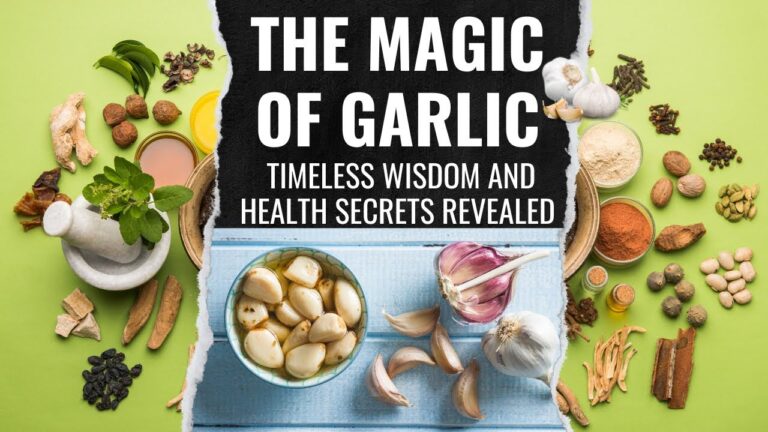The Emerald Shield: Unveiling Spinach’s Anti-Inflammation Power and Soothing Your Body from Within
In a world increasingly besieged by the silent epidemic of chronic inflammation, humanity is on a perpetual quest for solace, for remedies that transcend symptomatic relief and address the root causes of dis-ease. We scour pharmaceutical aisles, explore exotic superfoods, and embark on complex dietary regimens, often overlooking the humble, emerald-green marvel that sits quietly in our produce bins: spinach. More than just a leafy green, spinach emerges as a formidable, natural anti-inflammatory powerhouse, a verdant shield capable of soothing the body’s internal turmoil and fostering a state of profound well-being. This is the story of spinach, not merely as a vegetable, but as a sophisticated biological agent, meticulously crafted by nature to combat the insidious forces of inflammation and restore harmony to our cellular landscape.
Our journey begins by first understanding the adversary. Inflammation, in its acute form, is a vital physiological response—a loyal guardian springing into action when the body faces injury or infection. It’s the redness, swelling, and pain around a cut finger, signaling the immune system’s swift deployment of healing agents. This transient, self-limiting process is a testament to our body’s innate wisdom, a necessary fire to cleanse and repair. However, when this fire smolders unchecked, becoming a chronic, low-grade inferno, it transforms from protector to predator. This is the insidious nature of chronic inflammation, a silent assailant that relentlessly erodes tissues, compromises cellular function, and lays the groundwork for a myriad of modern afflictions.
From the relentless ache of arthritis to the metabolic chaos of type 2 diabetes, from the cardiovascular perils of atherosclerosis to the neurodegenerative fog of Alzheimer’s, and even the uncontrolled proliferation of cancer cells – chronic inflammation is often the unseen conductor of this grim orchestra of disease. It is fueled by an array of factors intrinsic to contemporary life: highly processed diets laden with refined sugars and unhealthy fats, persistent psychological stress, inadequate sleep, sedentary lifestyles, and constant exposure to environmental toxins. These elements conspire to trigger a cascade of molecular events, unleashing pro-inflammatory cytokines (like TNF-α and IL-6), oxidative stress, and the activation of signaling pathways such as NF-κB, which then orchestrate the expression of genes responsible for perpetuating inflammation. The body, constantly on high alert, becomes a battleground, its resources depleted, its systems perpetually stressed.
It is into this complex, often daunting landscape that spinach strides forth, not with a flourish, but with a quiet confidence born of its intricate biochemical composition. For the knowledgeable audience, it’s not enough to simply state that spinach is "good for you." We must delve deeper, peeling back the layers of this leafy green to reveal the sophisticated arsenal it harbors, the very compounds that enable it to extinguish the flames of chronic inflammation and nurture cellular resilience.
The Green Avenger: Unveiling Spinach’s Anti-Inflammatory Arsenal
Spinach is a veritable treasure trove of bioactive compounds, a synergistic symphony of nutrients working in concert. Its anti-inflammatory prowess is not attributable to a single magic bullet but to a meticulously orchestrated interplay of phytochemicals, vitamins, and minerals, each playing a crucial role in mitigating inflammation through distinct yet complementary mechanisms.
1. The Phytochemical Phalanx: Nature’s Anti-Inflammatory Agents
At the forefront of spinach’s defensive line are its phytochemicals – plant-derived compounds that are not essential for human survival but exert profound health benefits.
-
Flavonoids: Spinach is particularly rich in flavonoids such as quercetin, kaempferol, and myricetin. These polyphenolic compounds are celebrated for their potent antioxidant and anti-inflammatory activities. Quercetin, for instance, has been extensively studied for its ability to stabilize mast cells, inhibit histamine release, and modulate key inflammatory enzymes like cyclooxygenase (COX) and lipoxygenase (LOX). It can also downregulate pro-inflammatory cytokine production and inhibit the activation of the NF-κB pathway, a central regulator of inflammatory gene expression. Kaempferol and myricetin contribute similarly, acting as free radical scavengers and interfering with various stages of the inflammatory cascade, from initiation to resolution. Their collective action creates a robust shield against oxidative damage, a primary driver of inflammation.
-
Carotenoids: The vibrant green hue of spinach belies its rich content of carotenoids, powerful fat-soluble antioxidants. Beyond beta-carotene (a precursor to Vitamin A), spinach boasts impressive levels of lutein and zeaxanthin, renowned for their role in eye health, protecting against age-related macular degeneration. However, their benefits extend far beyond the retina. Lutein and zeaxanthin act as potent free radical quenchers, neutralizing reactive oxygen species (ROS) that contribute to cellular damage and inflammation. They also help to reduce the oxidation of LDL cholesterol, a critical step in the development of atherosclerosis. Furthermore, spinach contains less common but equally important carotenoids like neoxanthin and violaxanthin, which have demonstrated unique anti-inflammatory properties, including the ability to inhibit the production of nitric oxide and prostaglandins, key mediators of inflammation.
-
Saponins: While often associated with bitterness in certain plants, the saponins found in spinach, particularly spinacosides, are gaining recognition for their therapeutic potential. Emerging research suggests that these glycosides possess immunomodulatory and anti-inflammatory effects. They may influence immune cell activity and help regulate the body’s inflammatory responses, though their exact mechanisms are still under active investigation.
-
Glycolipids: Perhaps one of the most intriguing and lesser-known anti-inflammatory components of spinach are its glycolipids, specifically monogalactosyldiacylglycerol (MGDG) and digalactosyldiacylglycerol (DGDG). These unique compounds, found in the chloroplasts of green leaves, have demonstrated remarkable anti-inflammatory properties, particularly in preclinical studies. They are thought to inhibit the activity of phospholipase A2 (PLA2), an enzyme that releases arachidonic acid, a precursor to many pro-inflammatory eicosanoids (like prostaglandins and leukotrienes). By interfering with this crucial step, spinach glycolipids effectively dampen the production of inflammatory mediators, offering a novel pathway for anti-inflammatory action that complements the effects of other phytochemicals. Their presence underscores the sophisticated design of spinach as a natural anti-inflammatory agent.
2. The Vitamin and Mineral Vanguard: Essential Cofactors for Resilience
Beyond its phytochemical arsenal, spinach provides a critical array of vitamins and minerals that are integral to maintaining cellular health and modulating inflammatory responses.
-
Vitamin K: Spinach is one of the richest dietary sources of Vitamin K1 (phylloquinone). While famously known for its role in blood coagulation, Vitamin K is increasingly recognized for its significant anti-inflammatory properties. It helps regulate the production of inflammatory cytokines and can directly inhibit the activation of NF-κB, thereby suppressing the expression of genes involved in inflammation. Moreover, Vitamin K is crucial for bone health, and chronic inflammation is often linked to bone loss, making its presence in spinach doubly beneficial.
-
Vitamin C: This water-soluble powerhouse is a primary antioxidant, tirelessly neutralizing free radicals and protecting cells from oxidative damage, a major trigger for inflammation. Vitamin C also plays a vital role in immune function and the synthesis of collagen, which is essential for tissue repair and integrity.
-
Vitamin E: As a fat-soluble antioxidant, Vitamin E works in synergy with other antioxidants to protect cell membranes from lipid peroxidation, a process that can initiate and propagate inflammatory cascades.
-
Folate (Vitamin B9): While not directly anti-inflammatory, folate plays a critical role in DNA synthesis and repair, and in the methylation cycle. It helps lower levels of homocysteine, an amino acid whose elevated concentrations are associated with increased inflammation and cardiovascular disease risk. By supporting these fundamental cellular processes, folate indirectly contributes to an anti-inflammatory environment.
-
Magnesium: This essential mineral is involved in over 300 enzymatic reactions in the body, including those related to muscle and nerve function, blood glucose control, and blood pressure regulation. Critically, magnesium deficiency is linked to increased markers of inflammation. By ensuring adequate magnesium intake, spinach helps support cellular energy production and reduces the systemic inflammatory burden.
-
Manganese: A cofactor for several important enzymes, including superoxide dismutase (SOD), a powerful antioxidant enzyme, manganese helps the body combat oxidative stress, a key driver of inflammation.
-
Omega-3 Fatty Acids (ALA): While not as prominent as in flaxseeds or chia seeds, spinach does contain small amounts of alpha-linolenic acid (ALA), a plant-based omega-3 fatty acid. ALA can be converted in the body (albeit inefficiently) into EPA and DHA, which are known to produce potent anti-inflammatory mediators (resolvins and protectins) and help resolve inflammation.
The Mechanisms of Action: How Spinach Soothes from Within
With its rich tapestry of bioactive compounds, spinach doesn’t just offer nutrients; it actively intervenes in the body’s inflammatory processes, working on multiple fronts to restore balance.
1. Direct Antioxidant Activity: The first line of defense is its sheer antioxidant power. Flavonoids, carotenoids, and vitamins C and E work synergistically to scavenge free radicals and reactive oxygen species (ROS). These highly reactive molecules are byproducts of metabolism and environmental exposure, and they cause oxidative stress, damaging cellular components like DNA, proteins, and lipids. This damage triggers inflammatory responses. By neutralizing these harmful molecules, spinach effectively dampens the initial spark of inflammation.
2. Modulation of Inflammatory Pathways: This is where spinach demonstrates its sophisticated biological intelligence. Its compounds don’t just put out fires; they prevent them from starting or spreading.
-
NF-κB Pathway Inhibition: The nuclear factor kappa-light-chain-enhancer of activated B cells (NF-κB) is a master regulator of the immune response and a central player in inflammation. When activated, NF-κB translocates to the nucleus and promotes the transcription of genes encoding pro-inflammatory cytokines, chemokines, and adhesion molecules. Numerous compounds in spinach, particularly its flavonoids (quercetin, kaempferol) and Vitamin K, have been shown to inhibit the activation of NF-κB. By blocking this crucial pathway, spinach effectively mutes the body’s alarm system, preventing the overproduction of inflammatory mediators.
-
COX-1 and COX-2 Inhibition: Cyclooxygenase (COX) enzymes, particularly COX-2, are key enzymes in the synthesis of prostaglandins, which are potent mediators of pain and inflammation. Non-steroidal anti-inflammatory drugs (NSAIDs) work by inhibiting these enzymes. Spinach compounds, especially its glycolipids and certain flavonoids, exhibit natural COX-inhibitory activity. While not as potent as pharmaceutical drugs, this natural inhibition provides a gentle yet consistent dampening of prostaglandin production, contributing to pain relief and reduced inflammation without the side effects often associated with synthetic inhibitors.
-
Cytokine Suppression: Pro-inflammatory cytokines like Tumor Necrosis Factor-alpha (TNF-α) and Interleukin-6 (IL-6) are messengers that propagate and amplify inflammatory responses throughout the body. Spinach compounds have been shown to reduce the production and release of these cytokines, thereby breaking the vicious cycle of chronic inflammation.
3. Gut Microbiome Influence: The gut is now recognized as a central hub for immune regulation and inflammation. A healthy gut microbiome, teeming with beneficial bacteria, can produce anti-inflammatory short-chain fatty acids (SCFAs) like butyrate. Spinach, as a fibrous leafy green, acts as a prebiotic, feeding these beneficial gut bacteria. A thriving gut microbiome can not only reduce systemic inflammation but also improve nutrient absorption, further enhancing the body’s overall resilience. The unique glycolipids in spinach may also play a direct role in maintaining gut barrier integrity, preventing the leakage of toxins and undigested food particles into the bloodstream, a phenomenon known as "leaky gut," which is a significant trigger for systemic inflammation.
4. Cellular Protection and Repair: By reducing oxidative stress and modulating inflammatory pathways, spinach compounds collectively contribute to cellular protection. They help maintain the integrity of cell membranes, protect DNA from damage, and support the body’s natural repair mechanisms. This means healthier cells, more resilient tissues, and a reduced burden on the immune system, allowing it to function optimally without being perpetually inflamed.
From Garden to Gut: Maximizing Spinach’s Potential
Understanding spinach’s profound anti-inflammatory power is one thing; harnessing it effectively is another. For the knowledgeable individual, optimization is key.
Bioavailability and Cooking Methods: The way spinach is prepared significantly impacts the bioavailability of its nutrients.
- Raw vs. Cooked: Raw spinach retains more heat-sensitive vitamins like Vitamin C and some folate. However, cooking (especially steaming or light sautéing) can break down cell walls, making some fat-soluble carotenoids (like lutein and beta-carotene) and certain antioxidants more accessible for absorption. Cooking also reduces oxalate content, which can bind to minerals like calcium and iron, potentially hindering their absorption in high amounts.
- Pairing with Fats: Since many of spinach’s most potent anti-inflammatory compounds, such as carotenoids and Vitamin K, are fat-soluble, consuming spinach with a healthy fat source (e.g., olive oil in a salad, avocado in a smoothie, nuts/seeds) significantly enhances their absorption.
- Blending: For maximum nutrient extraction and reduced oxalate concerns (as oxalates are less problematic when well-hydrated), blending spinach into smoothies is an excellent strategy.
Practical Integration for Consistent Benefit: The power of spinach lies in its consistent inclusion in the diet.
- Smoothie Powerhouse: Add a generous handful to your morning smoothie for a nutrient-dense start.
- Salad Base: Use spinach as the foundation for vibrant salads, combining it with other colorful vegetables, lean proteins, and a healthy vinaigrette.
- Sautéed Sides: Quickly sauté spinach with garlic and a drizzle of olive oil for a simple yet potent side dish.
- Hidden in Dishes: Incorporate chopped spinach into sauces, soups, stews, casseroles, omelets, and even baked goods (like savory muffins) to boost their nutritional profile without significantly altering flavor.
- Juicing: While less common for spinach alone, it can be a powerful addition to green juices.
Important Considerations:
- Oxalates: Spinach is high in oxalates, which can contribute to kidney stone formation in susceptible individuals. For most healthy people, the amount consumed in a balanced diet poses no issue. However, individuals with a history of kidney stones should consult their doctor and consider blanching or lightly cooking spinach to reduce oxalate content, or consume it in moderation alongside calcium-rich foods (calcium binds to oxalates in the gut, preventing their absorption).
- Vitamin K and Anticoagulants: Due to its high Vitamin K content, individuals on anticoagulant medications (like warfarin) should maintain a consistent intake of spinach (and other Vitamin K-rich foods) rather than fluctuating their consumption dramatically. Sudden changes can interfere with medication effectiveness. Always consult a healthcare provider for personalized dietary advice when on medication.
The Emerald Legacy: A Story of Empowerment
Our journey through the anti-inflammatory power of spinach concludes not with a scientific treatise, but with a story of empowerment. It is the narrative of a body in distress, besieged by the chronic fires of inflammation, finding profound relief and renewed vitality through the humble embrace of a leafy green. Spinach, far from being a mere accompaniment, emerges as a central character in the ongoing saga of human health, a testament to nature’s unparalleled capacity to heal and sustain.
By consciously choosing to integrate spinach into our daily lives, we are not just consuming a vegetable; we are actively engaging in a sophisticated biochemical dialogue with our bodies. We are providing the precise tools—the flavonoids, carotenoids, glycolipids, vitamins, and minerals—that enable our cells to calm the storm, extinguish the smoldering embers of inflammation, and rebuild from within. This is the power of informed dietary choices, transforming a simple act of eating into a profound act of self-care.
In a world searching for complex solutions, the answer often lies in the elegant simplicity of nature. Spinach, the emerald shield, offers a powerful, accessible, and delicious pathway to soothe your body, reduce inflammation, and cultivate a foundation for enduring health. It is a daily reminder that the most profound healing often begins with the most unassuming of heroes, quietly working wonders, one leafy green at a time. Let its story inspire you to embrace its power and embark on your own journey towards a body truly soothed and revitalized.







